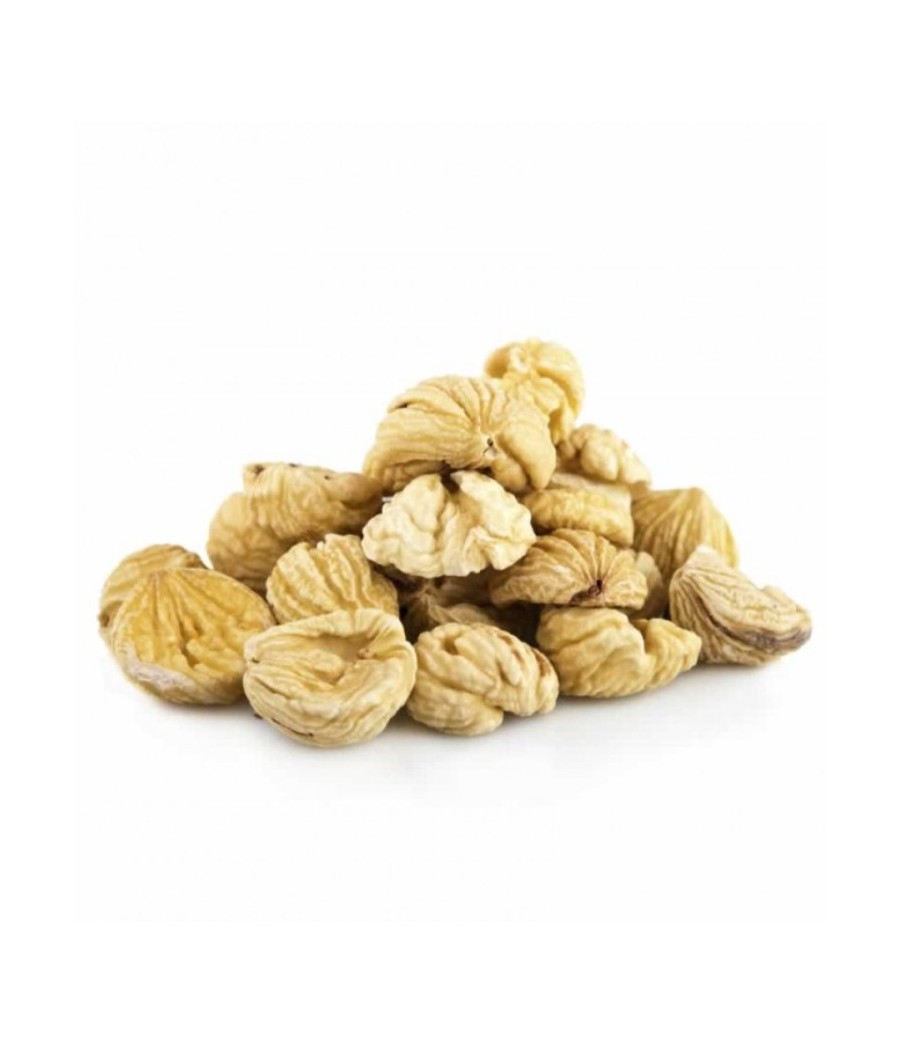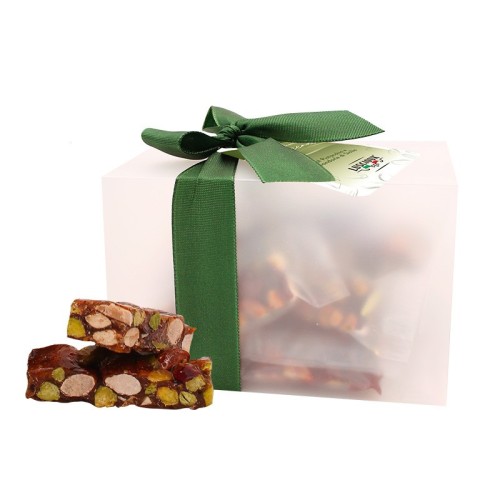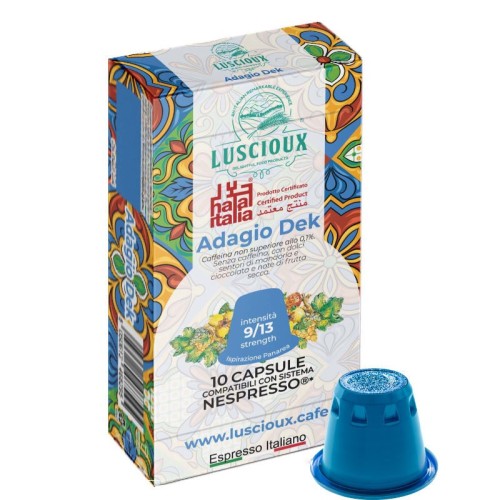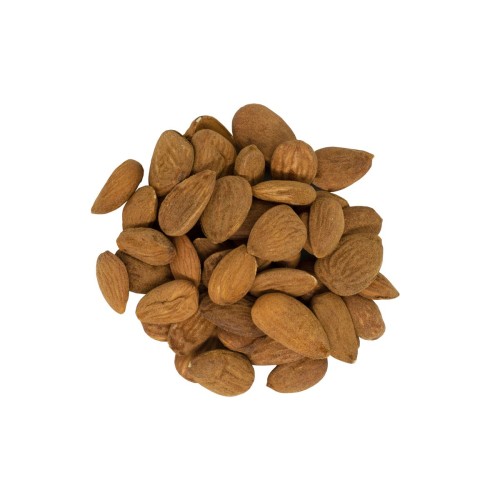Dried Italian Chestnuts
Dried chestnuts obtained from the drying of highly selected fresh Italian chestnuts.
Ingredients: 100% Italian dried chestnuts
 Security policy
Security policy
Transparency and reliability - Encrypted information (SSL Certificate)
 Delivery policy
Delivery policy
Fast shipping with delivery in 1- 4 working days.
 Return policy
Return policy
24/7
Our dried chestnuts are a natural product obtained from the drying of highly selected fresh Italian chestnuts. They are naturally gluten-free, allergen-free, and alcohol-free. It's a product suitable for vegetarians and vegans, and free from any preservatives and additives.
Ingredients: 100% Italian dried chestnuts.
Data sheet
- Product
- Chestnuts
Specific References
- ean13
- 8054134419407
Nutritional values
| Ingredients | Ingredients: chestnuts. May contain traces of NUTS. |
| Method of conservation | Keep in a cold and dry place. |
| Nutrition declaration | average values per 100 g: |
| Power | 1544kJ / 366kcal |
| Fats | 4.0 g |
| of which saturated fatty acids | 0.7 g |
| Carbohydrates | 71 g |
| of which sugars | 23 g |
| Fibers | 10 g |
| Protein | 6.4g |
| Salt | 0 g |
| Copper | 0.55 mg (55% NRV*) |
| Manganese | 5.4 mg (270% NRV*) |
| Potassium | 944 mg (47% NRV*) |
| Directions | The advice given IS NOT IN ANY WAY TO BE CONSIDERED OF MEDICAL/PRESCRIPTIVE VALUE. The information provided is for informational and informative purposes only, therefore they are not intended in any way to replace medical advice. In the presence of pathologies you should always consult your doctor. |
| Origin | Italy |
| Nutrients | Manganese, Potassium, Copper |
| Vnr | *Nutritional Reference Value |
| Label and packaging | The images are included for illustrative purposes, the product may undergo changes based on stock availability and the selected weight. |
Curiosity
In common parlance the term "chestnut" is used to define any type of chestnut fruit available on the market, even if in reality this term is not exactly correct. An important distinction that must be made, in fact, is that between "chestnuts" and "browns" which, although they are often used as synonyms, actually indicate two very different products from a morphological, qualitative and commercial point of view:
- Chestnuts : the term "chestnut" includes numerous varieties deriving from the European chestnut, widespread in the various Italian chestnut-growing areas. More elongated in shape, dark brown in colour, chestnuts have an internal peel that penetrates deeply into the pulp, in some cases up to dividing it (in which case we speak of septate fruits) which often makes them difficult to peel . From a commercial point of view, real chestnuts are of different sizes, smaller and generally cost less than chestnuts, compared to which they are less valuable. The size varies from 45 to 100 fruits per kg.
- Chestnuts : intended for both industrial processing and fresh consumption; they are the most sought after type on the market where they are sold at high prices. Chestnuts that are not set, have a more rounded shape, are considered "brown", with a slightly streaked light brown skin and a sweeter and more fragrant taste than chestnuts. Among the main characteristics of brown is the fact that the episperm (i.e. the skin of the fruit) does not penetrate the pulp and this allows them to be peeled more easily. Maturation takes place towards the end of September. They have a medium-large size (from 55 to 70 fruits per kg).
History
The European chestnut (scientific terminology Castanea sativa ) belongs to the genus Castanea and to the family Fagaceae . Cultivated for centuries in the territories of Southern and Central Europe, its origins are very ancient and still uncertain today. Most botanists believe it to be a native plant of European territories, but other hypotheses want it to be native to Asia Minor; in fact, the current taxonomic classification of the Castanea genus is based on the study carried out by Richard A. Jaynes, in 1975, in which it is hypothesized that the plant is native to China.
What is certain is that it is a very ancient species and widely spread since the Tertiary period (Paleocene-Pliocene) thanks to its agricultural and forestry use. During the Ice Age the distribution of the chestnut underwent a regression due to the cooling of the climate, but over the centuries, due to economic needs, its cultivation once again expanded considerably even outside the natural limits of the species.
The Romans dedicated themselves to the cultivation of chestnuts mainly to obtain timber to be used both in construction and for the construction of barrels dedicated to the transport of wine. It was the Romans who made a decisive contribution to the diffusion and cultivation of the chestnut tree, not only in Italy but throughout central-southern Europe, planting real fruit chestnut groves and timber forests in Spain, Portugal, France, Switzerland and Germany.
Also throughout the 19th century, hundreds of thousands of peasants and mountaineers depended on fresh, dried or floured chestnuts for their survival. It is no coincidence that Giovanni Pascoli defines the chestnut as ' the Italian bread tree' since, even in our country, its fruit (called 'mountain bread') at the time was the basis of the diet of a large part of the rural population.
The production of chestnuts today has increased exponentially, mainly concentrated in Asia and Europe. Italy is firmly at the top of the European producer countries together with Portugal and Spain. In Asia, most of the production comes from China.
The varieties of chestnut grown in Italy are very numerous, in fact each cultivation area boasts different types, named according to the production location. Some types of Italian chestnuts have obtained PDO and/or PGI recognition: these two brands aim to enhance the agri-food productions of a specific territory/region with a unambiguous, homogeneous and valid procedure for all the states of the European Union.
There are four recognized and certified Italian chestnuts :
- Chestnut of Vallerano DOP,
- Chestnut of Cuneo PGI,
- PGI Monte Amiata Chestnut,
- Chestnut of Montella IGP.
On the market, chestnuts are mainly found in four forms :
- Fresh chestnuts : without the shell, they are consumed after cooking in the oven or on the grill,
- "Soft" dried chestnuts : suitable for immediate consumption, but more perishable;
- Dried "hard" chestnuts : which, before consumption, need to be soaked in rehydration;
- Chestnut flour : obtained from dried chestnuts and used in many sweet and savory recipes.
For drying, it is preferable to use small, sugary fruits that are not set very hard and are easy to peel. The drying of the product generally takes place with dehumidified air and at low temperatures, so as to leave the fragrance, color and aroma of the starting raw material unaltered, while at the same time ensuring good rehydration, raising the quality index.
Sources
- Nuts Book
- Supplier datasheets
https://www.fondazioneomd.it/single-post/2016/10/19/When-the-tempo-takes…-In-castagna
Property
100g of chestnuts contain approximately:
- 5.4 mg of manganese , equal to 270% of the NRV (reference nutritional value);
- 0.55 mg of Copper , equal to 55% of the NRV;
- 944 mg of Potassium , equal to 47% of the NRV.
No customer reviews for the moment.






